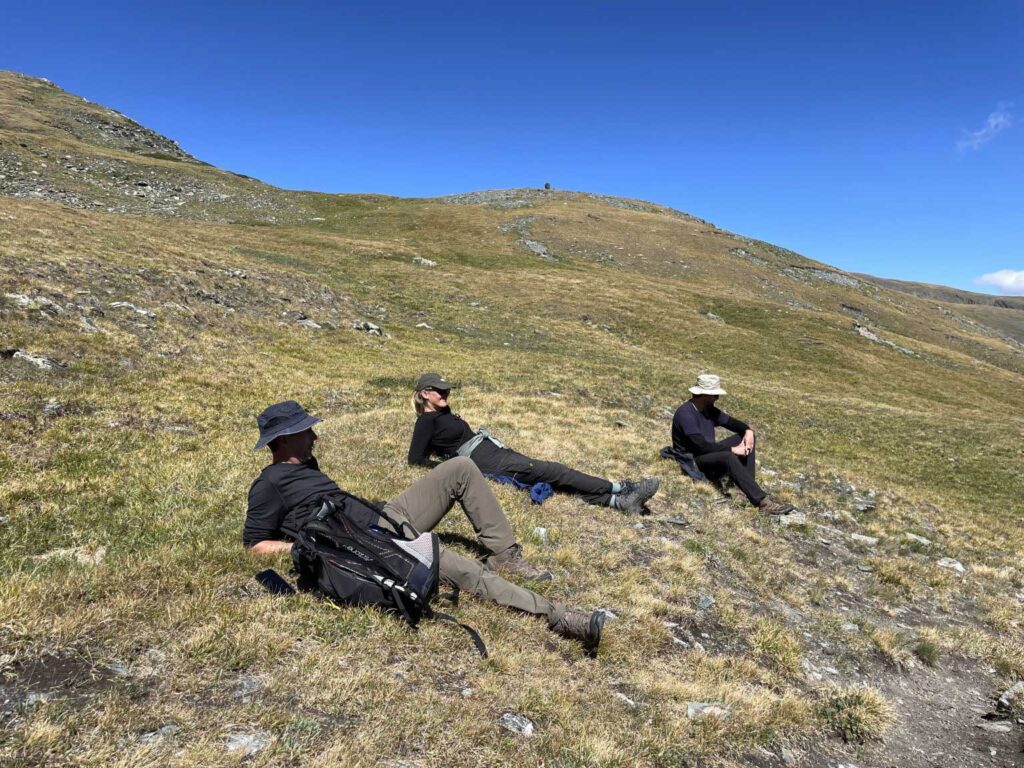Essential planning your trekking in Mongolia
Embark on a thrilling adventure in Mongolia with a trekking tour that offers breathtaking landscapes and cultural encounters. Trekking in Mongolia allows you to explore diverse terrains, from the rugged Altai Mountains to the vast Gobi Desert and the pristine Khovsgol Lake region.
With its nomadic heritage, Mongolia offers a unique opportunity to immerse yourself in the local way of life during your trek. Encounter traditional Mongolian gers (yurts), interact with friendly nomadic herders, and witness their centuries-old customs.
Trekking routes in Mongolia cater to various experience levels, from leisurely hikes to challenging mountain climbs. You can opt for short day hikes or embark on multi-day expeditions, traversing remote valleys, crossing mountain passes, and observing an array of wildlife along the way, including wild horses, ibex, and eagles.

The best time for trekking in Mongolia is during the summer months (June to September), when the weather is mild and the landscapes burst with vibrant colors. However, be prepared for unpredictable weather conditions and fluctuations in temperature, especially in mountainous regions.
Joining a trekking tour in Mongolia ensures the necessary support and logistics, including knowledgeable guides, accommodations in ger camps or tents, meals, and transport. Selecting a reputable tour operator ensures a safe and memorable experience, as they can tailor the itinerary to your preferences and provide valuable insights into the local culture and environment.
Whether you choose to explore the majestic Altai Mountains, traverse the vast Gobi Desert, or venture into other regions of Mongolia, a trekking tour promises an unforgettable journey through pristine wilderness and a chance to experience the nomadic spirit of the country.
To embark on a trekking tour in Mongolia, here is a detailed list of what you need to do:
- Choose a Trekking Route:
Research and select a trekking route that aligns with your preferences and fitness level. Some popular trekking destinations in Mongolia include the Altai Tavan Bogd National Park, Khovsgol Lake, Gobi Desert, and Terelj National Park. - Obtain Necessary Permits:
Check if your chosen trekking route requires any permits. Contact the local authorities or a reputable tour operator to obtain the necessary permits for your trek. They can guide you through the process and ensure you have all the required paperwork. - Plan Your Itinerary:
Develop a detailed itinerary for your trekking tour. Take into account the number of trekking days, rest days, sightseeing opportunities, and overnight stays. Consider the distance, terrain, and elevation changes along the route to estimate the time required for each segment. - Engage a Local Guide or Tour Operator:
To ensure a safe and rewarding experience, it’s recommended to hire a local guide or join a reputable tour operator. They have the expertise to navigate the terrain, provide cultural insights, and arrange necessary logistics such as transportation, accommodations, and meals. - Pack Essential Gear:
Pack appropriate trekking gear, including sturdy hiking boots, weatherproof clothing, a backpack, sleeping bag, tent, cooking equipment, and a first aid kit. Don’t forget to carry sufficient food, water, and snacks for the duration of your trek. - Consider Hiring Pack Animals:
If you’re planning a multi-day trek, you may want to consider hiring pack animals like horses or camels to carry heavier equipment and supplies. This can make the trek more enjoyable and less strenuous. - Physical Fitness and Training:
Prepare yourself physically for the trek by engaging in regular exercise, particularly cardiovascular activities like hiking, running, or cycling. Strengthen your leg muscles and improve your stamina to handle long-distance treks. - Travel Insurance:
Ensure you have comprehensive travel insurance that covers trekking and any potential emergencies or accidents that may occur during your journey. Check the policy carefully to ensure it includes activities at high altitudes if relevant to your chosen trek. - Respect Local Culture and Environment:
Mongolia is home to a rich nomadic culture and breathtaking natural landscapes. Respect the local customs, traditions, and environment during your trekking tour. Follow the “Leave No Trace” principles, minimizing your impact on the surroundings and demonstrating responsible tourism practices. - Weather Conditions and Seasons:
Mongolia experiences extreme weather conditions, including hot summers and bitterly cold winters. Consider the weather patterns and associated challenges when planning your trek. Aim to trek during the summer months, from June to September, when the weather is generally more favorable.
Remember, trekking in Mongolia can be physically demanding and requires careful planning. By following these steps, you can have a safe and remarkable trekking experience.
